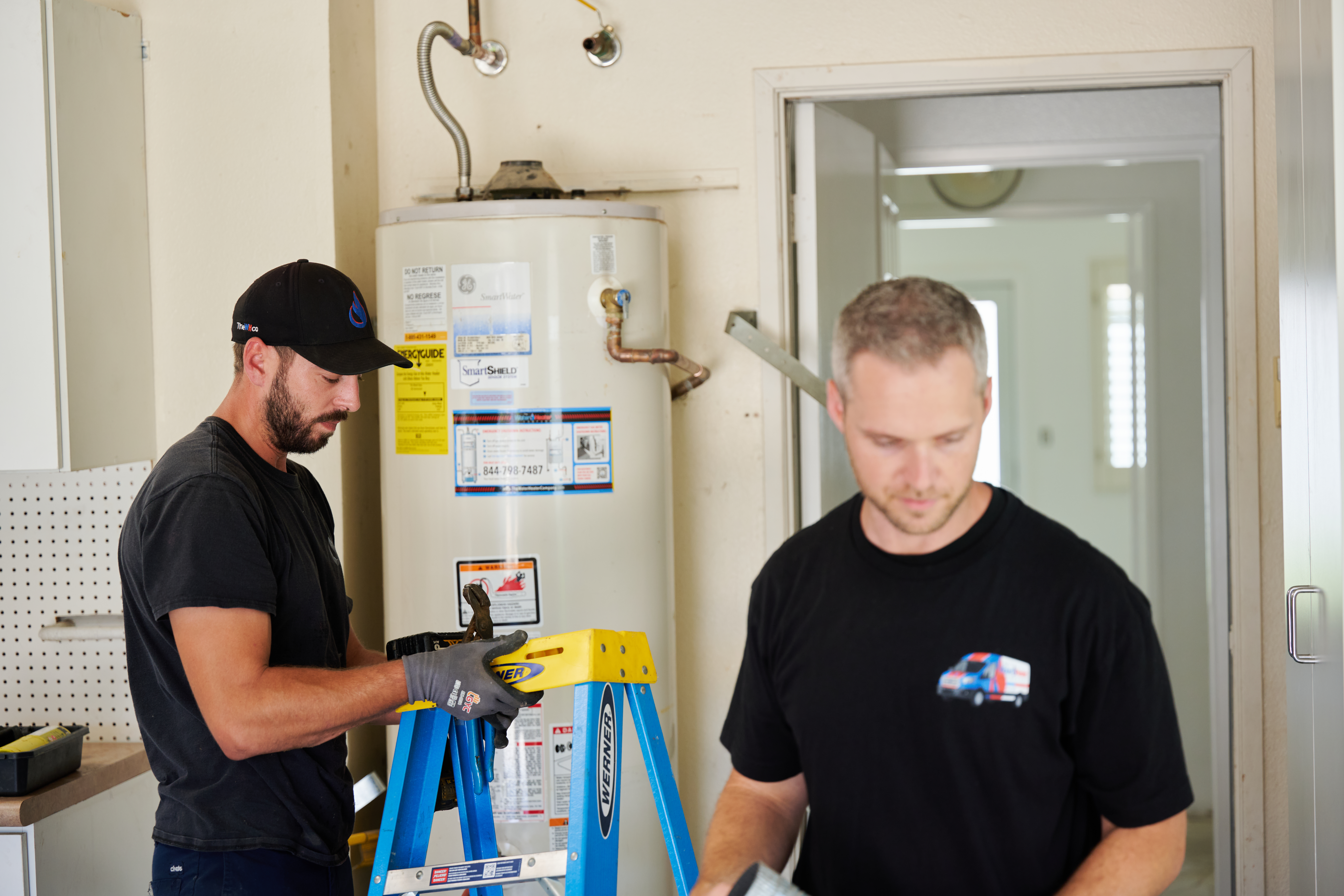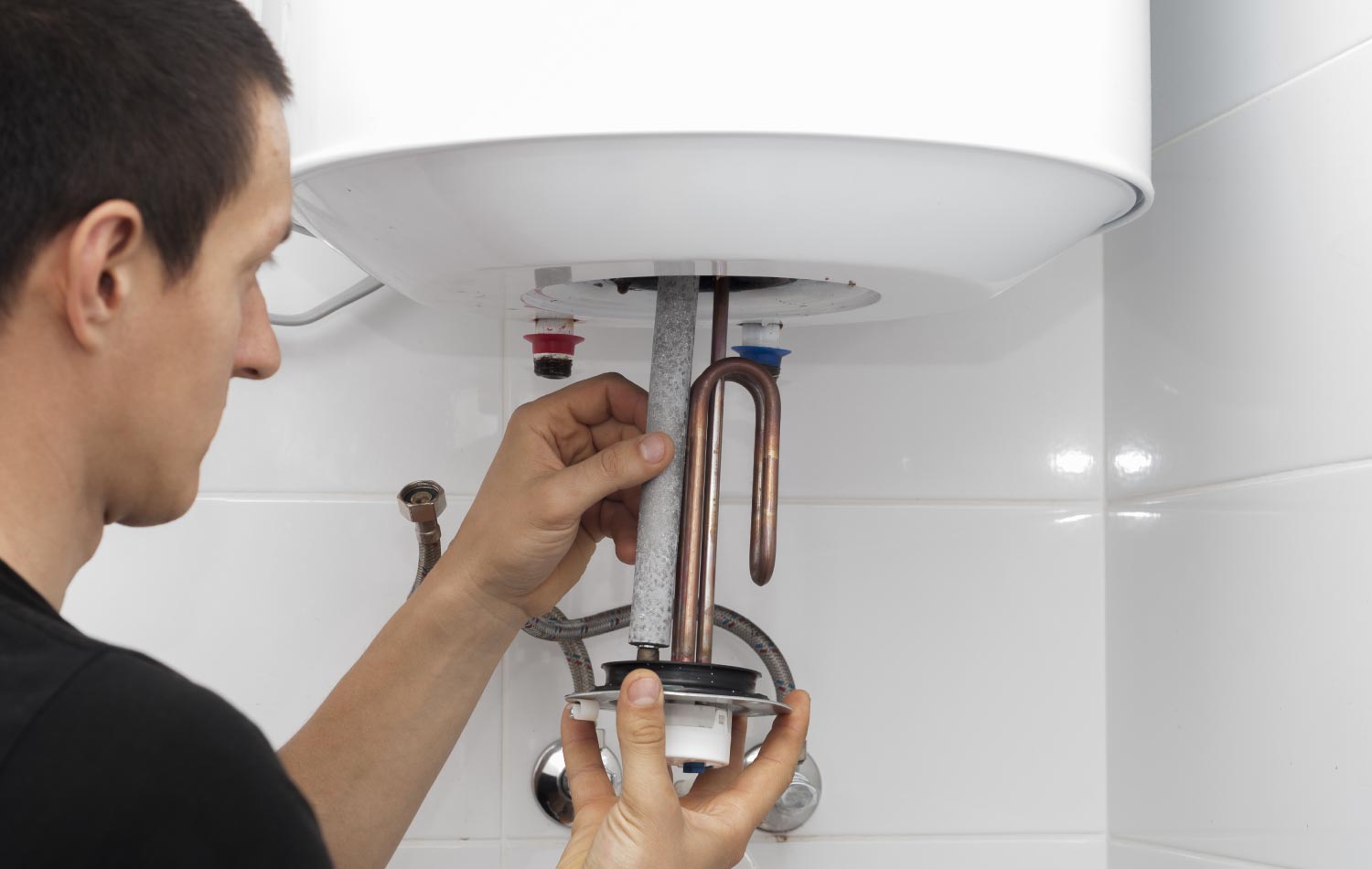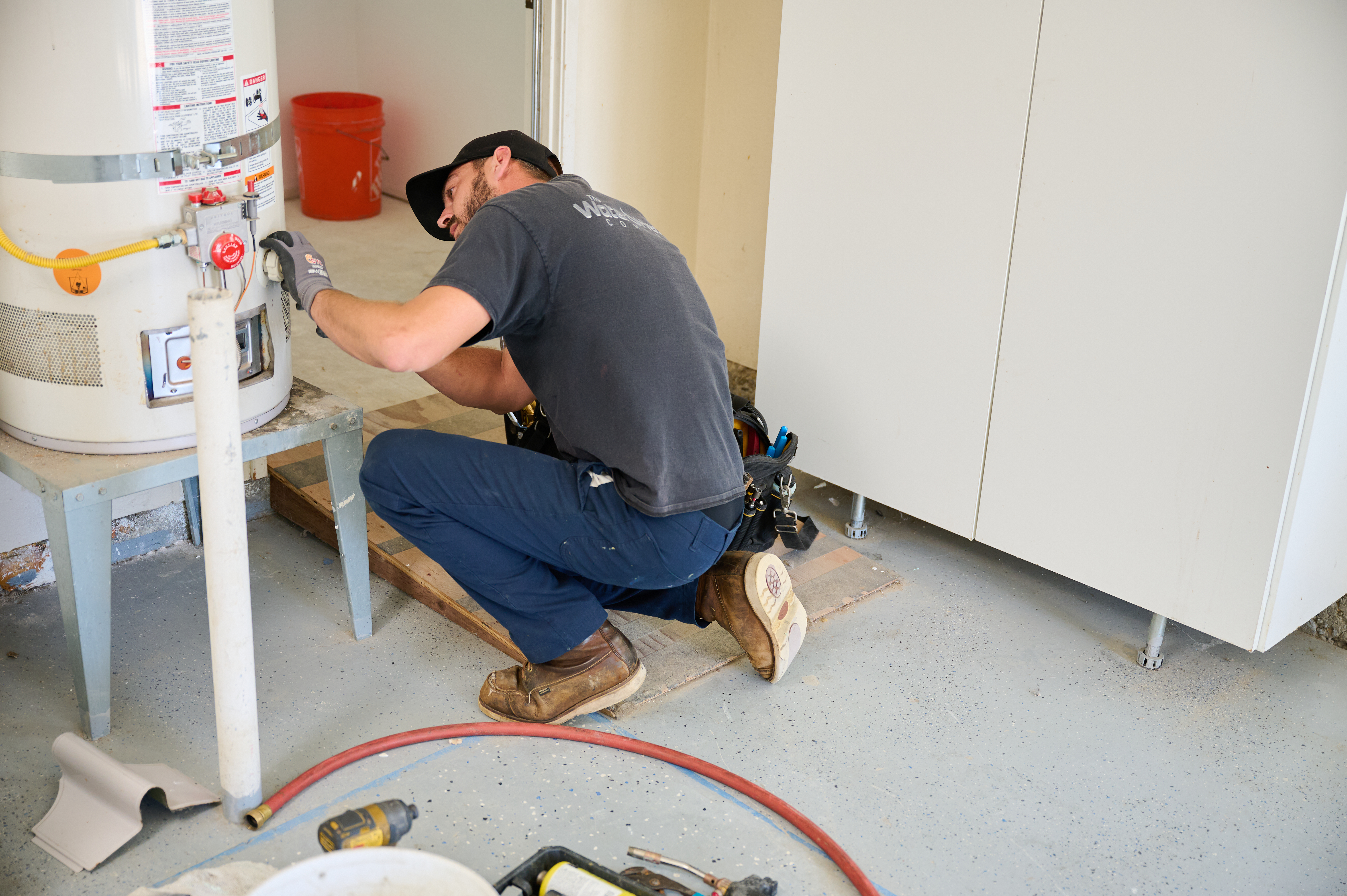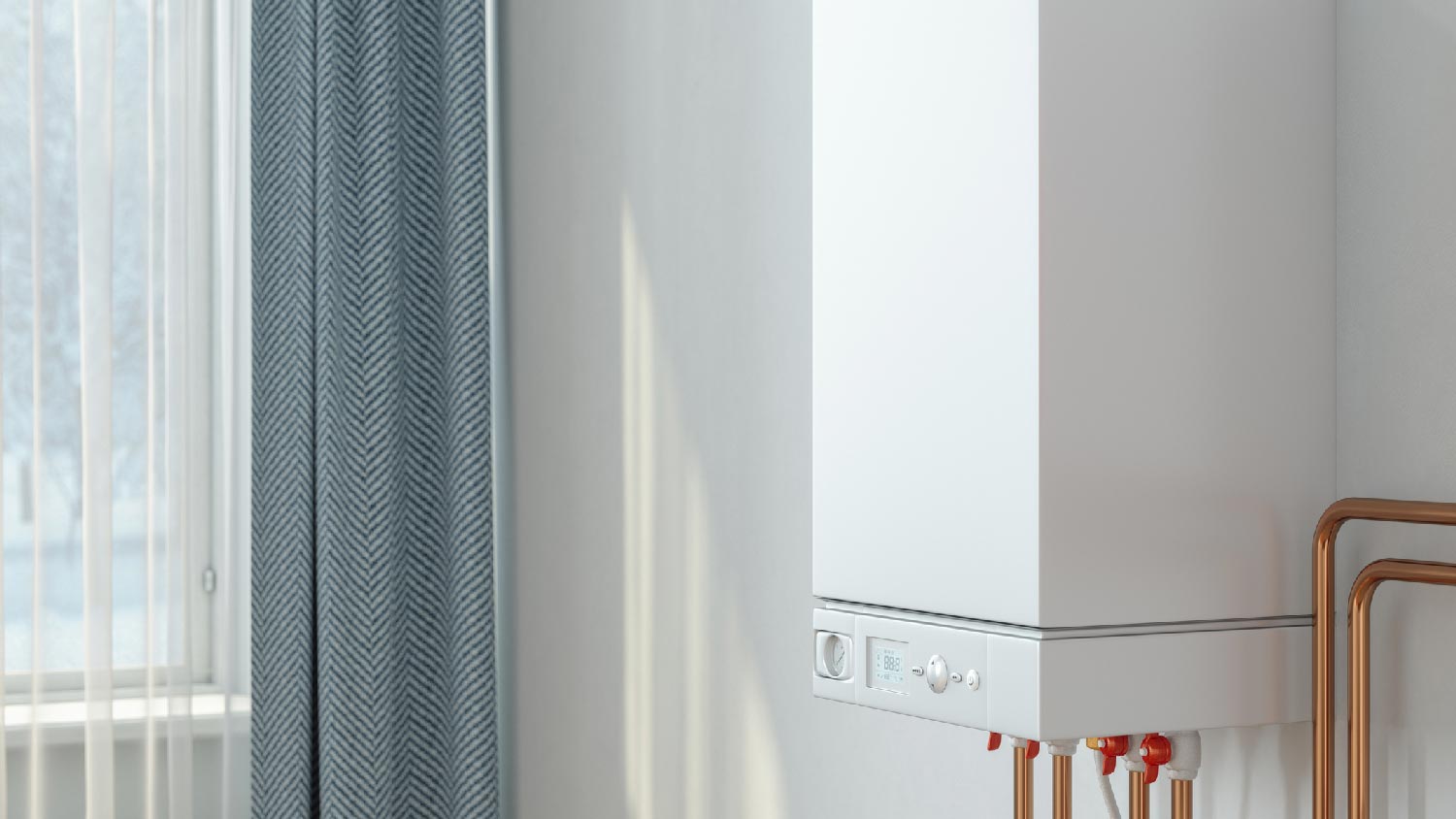
Learn about the different factors that go into water heater gas valve replacement costs to see if you should DIY the project or call a pro.
Prevent water heater floods and leaks with this handy guide


Here’s a horrifying scenario. You’re relaxing at home when, out of nowhere, your ceiling caves in, and water rushes everywhere. Is this the result of a terrible storm? Nope. This is the work of a burst water heater tank.
Water heater floods and leaks are some of the top sources of residential water damage, costing thousands of dollars to repair fully. In addition to draining the water, replacing furniture, and treating walls and floors, you may also have to replace the water heater itself. Replacing a water heater costs up to $1,200. In other words, water heater floods are headaches that no homeowner should endure.
Fortunately, there are some simple maintenance tasks that should prevent this drenched disaster. Here are seven things you can do to prevent a water heater from leaking, flooding, or bursting.
Make it your business to drain and flush the water heater tank every year. Over time, sediment caused by minerals in the water settles at the bottom of your tank. This sediment creates a layer on the bottom of the tank, insulating the liquid from the burner, forcing it to run longer and hotter. Eventually, all of this extra heat deteriorates the tank and causes structural instability. After that, it’s only a matter of time before leaks and floods occur.
Check for sediment buildup by listening to the water heater as it works. Do you hear a popping or knocking noise? That’s due to water attempting to escape the sediment layer, indicating that you should perform a drain-and-flush immediately.
Fortunately, this is a DIY-friendly task. Turn off your hot water by finding the correct valve and associated circuit breaker, allow the water in the tank to cool down, and turn on a hot water faucet in a nearby bathroom to prevent the formation of pressure.
Next, attach a garden hose to the drain valve with the other end in a bucket, sink, or outside. Open the drain valve completely by turning it counterclockwise. When the water stops flowing, turn on the water supply valve located at the top of the tank or at the water meter. Once this water runs clear of sediment, shut off the water supply valve and close the drain valve.

Water heaters are metal and, well, metal rusts. A rusted hot water tank is one step removed from leaks and floods. Luckily, water heaters include a fail-safe for rust called the anode rod. This three- to five-foot metal rod rusts in place of the tank, so if your anode rod has nearly deteriorated, your water heater will follow shortly. Consider the anode rod the canary to your water heater’s coal mine.
Inspect the anode rod for rust and deterioration every two years until the heater’s warranty expires, and then every year. If the rod looks severely rusted, replace it. Anode rods need replacement every three to five years.
The temperature and pressure relief valve work to minimize pressure buildup in your water heater tank. This valve turns on automatically whenever it senses dangerous levels of pressure, releasing said pressure as necessary. However, these valves can fail over time. Check the status of your T&P valve twice a year by performing a simple test. You’ll find the valve on the top or side of the tank. Turn on the switch for five seconds to ensure it can release water. Use caution; this water is scalding hot. If the water releases normally, your T&P valve is in tip-top shape.
Another way to minimize pressure buildup in your water heater tank is to adjust the thermostat. High temperatures (140 to 145 degrees F) increase pressure in the tank, leading to leaks and bursts. Set the thermostat to 120 to 135 degrees F to reduce this pressure. Experiment with temperature settings to find your perfect balance of “hot enough” while preserving the integrity of the water tank. As a bonus, lowering the temperature of your water heater should save you a few bucks on your monthly energy bill.
Sometimes you can do everything right, and your water heater still leaks or floods. Get proactive by protecting the flooring, so any leaks or floods stay near the water heater. Pick up a can of water sealant and paint the flooring underneath your water heater. You can also purchase a drain pan, otherwise known as a drip pan, and place it at the foot of the tank. Just make sure your pan has an actual drain on the bottom, and you’ll be good to go.

Many things can go wrong with a water heater, from tripped breakers to rusted water mains and beyond. Hire a professional plumber to conduct a thorough inspection every year to ensure everything runs smoothly. This pro will perform some of the aforementioned maintenance tasks, so you don’t have to.
Water heaters are hearty appliances that should run for at least ten years. However, after that first decade, your heater may start to show signs that it is about to fail. Cloudy or foul-smelling water, temperature fluctuations, and insufficient hot water are all signs that your heater is giving up the ghost. Consider replacing your water heater after ten to twelve years, though a plumber will tell you if the heater still has some fight left in it.
From average costs to expert advice, get all the answers you need to get your job done.

Learn about the different factors that go into water heater gas valve replacement costs to see if you should DIY the project or call a pro.

Tankless water heater costs in Columbus, OH depend on the size of your water heater, location, fuel type, and more. Keep reading to calculate your expenses.

A water heater flush costs $160 on average but can vary based on the unit size, type, labor, location, and more. Keep reading to learn how much you could pay.

If your gas hot water heater isn't working, you want to fix the issue quickly to prevent safety risks and major damage. Here's how to troubleshoot.

The time it takes to drain a water heater varies by system. This article provides the details and explains what to do if your water heater is draining slowly.

When your hot water is not working, it’s not always a water heater issues. Find out the cause and how to correct the course in our guide.